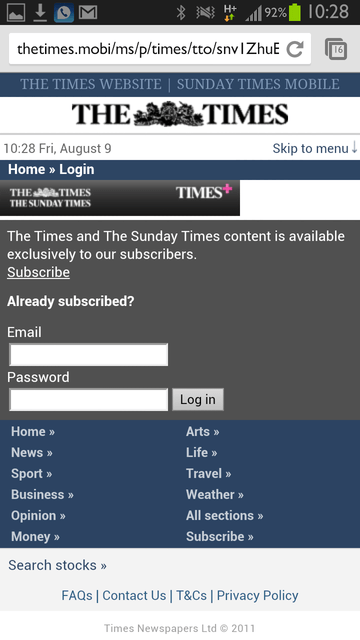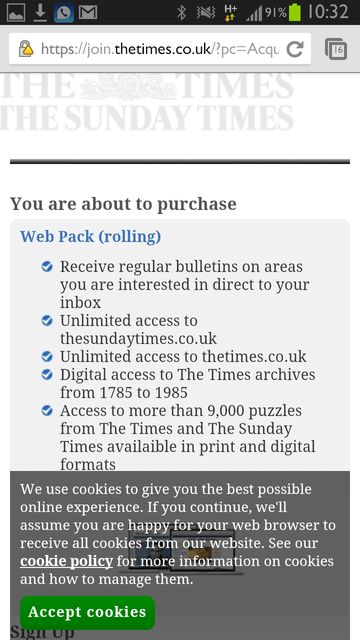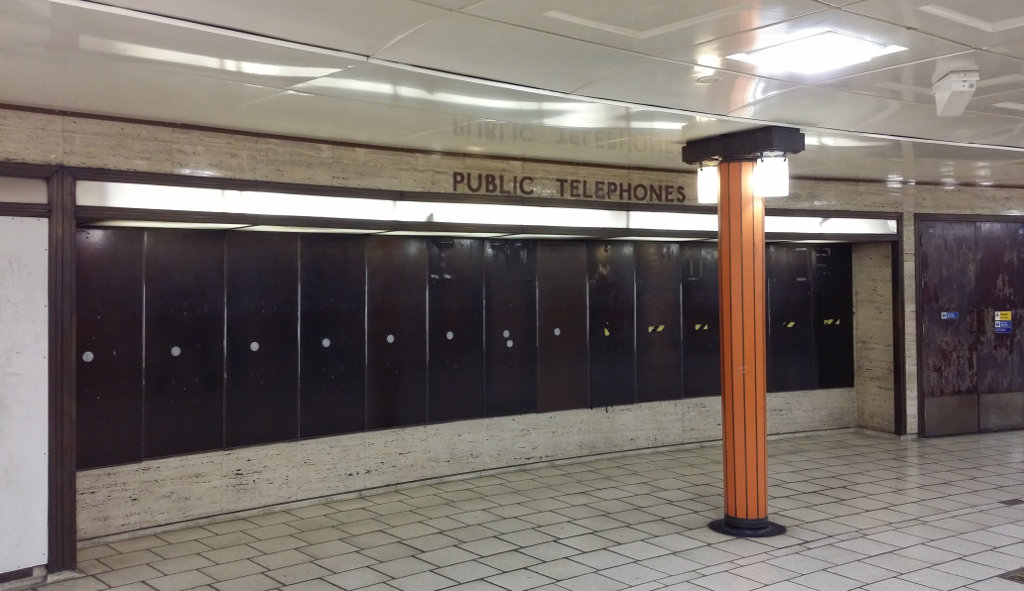Does The Times Care About Mobile Users?
Some days, I think it must be fantastic to work for an organisation which just doesn't care any more. The sort of place which thinks, "sod it, it's not like we need more readers or more money." That is, I imagine, what it's like to work for The Times.
For the last 3 years, The Times' articles have been (mostly) behind a paywall. People have been predicting its demise for just as long, but it shows no signs of going away - no matter how few people pay for content.
The overall thrust of The Times' argument is that they would rather have a low number of paying customers than a large number of freeloaders.
"What have we really lost? A long tail of passing trade, many from overseas, many popping in for only one article, referred by Google or a social media link, not even aware they are on a Times or a Sun website, wholly anonymous.
This reach doesn’t generate any meaningful revenue, and the pursuit of it undermines the piece of the business that does make money. If your purpose contemplates still being here in five to 10 years’ time, then the choice seems clear: it is better to sacrifice reach and preserve sustainable profitability."
News UK CEO Mike Darcey
Personally, I would like a large number of paying customers. But I'm old fashioned like that.
This leads me to the question - why does The Times make it so hard for me to give it money?
Here's a typical user journey.
"Oh! Hey! This looks like a pretty neat story that one of my Twitter friends has shared. Let's check it out!"

"Hmmm, I've been presented with a crappy desktop experience - despite being on a mobile. That doesn't happen with the Telegraph, FT, Guardian, Mirror, or Independent. They're smart enough to give me content formatted to my device."

"There's no link to view this story on mobile. I'll search for the mobile front page. I bet that's a good experience!"

"Still, running a image resizing proxy is pretty hard work. I'm glad I saw these error messages!"

"Ok, let's click on the story. I bet I can read the teaser content which has been available on the main site since 2012."

"No. Nothing. Oh well. Their reputation for hard hitting journalism means I certainly wish to subscribe."

"Wow! They really don't want my money. You know what, I'll try to get to their subscribe page on my phone anyway."

"Well, after searching the page for the smallest link imaginable, I've finally found something which looks like a mobile formatted page!"

"Finally! Take my money!"

What a load of rubbish! How is this a good way to take money from the billions of mobile users on the planet?
Here's how it should work....
- User clicks a link from Twitter.
- She sees a mobile friendly page, with teaser content, and a link to buy.
- Buy link takes her to a mobile payment gateway.
- User subscribes.
- That's it.
Using a service like ImpulsePay The Times could create a link which charged their £2 access fee directly to the user's phone bill (if they were in the UK). It's true that there's a lack of global mobile payment options - but considering their payment page is already mobile friendly, they could just link directly to that.
It's all very confusing. They have a reasonable mobile payment system - they don't link to it. They can take advantage of direct mobile billing to the majority of users - they don't. They could provide a beautiful and compelling mobile experience to detected devices - they can't be bothered.
What's going on? Don't The Times like money?



